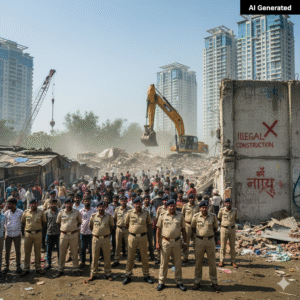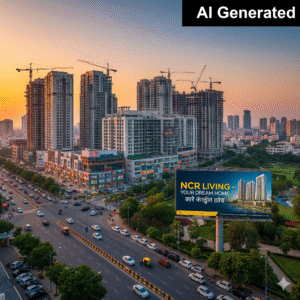Unlocking Wealth in Gurgaon’s Real Estate: A Guru’s Guide to Turning Crores into a Fortune Gurgaon, India – The secret to multiplying wealth in Gurgaon’s booming real estate market lies not in traditional buy-and-hold strategies, but in a dynamic approach of capital rotation and strategic timing, according to real estate savant Aishwarya Shri Kapoor. In a detailed analysis that has captured the attention of investors, Kapoor breaks down how an initial investment of just ₹2 crore can be scaled to a staggering ₹100 crore. The key, she emphasizes, is to think like a developer, not a retail customer.
Kapoor describes Gurgaon not merely as a city, but as a “flywheel” where stagnant capital shrinks, but rotating capital scales. The most successful investors, she reveals, don’t just buy property; they strategically enter and exit at specific moments in the development cycle to maximize their returns. This “silent wealth formula” has been the blueprint for numerous real estate fortunes built over the last decade.
The core of this strategy revolves around five distinct phases of a real estate project:
- Land Entry Before Policy Changes: The earliest and most crucial stage is to acquire land or a stake in it before new government policies or infrastructure developments are announced. This requires a keen eye on bureaucratic signals such as Urban Local Body (ULB) notifications, licensing actions, and changes in land use (CLU).
- Pre-Licensing Flips: This involves investing before a project receives all its necessary licenses. As the project clears regulatory hurdles, its value increases, offering a lucrative exit opportunity.
- Joint Venture Equity Phases: Partnering with developers in the early stages through joint ventures can provide significant equity upside.
- Exit-to-Retail Timing: This is the phase where most retail investors enter, buying apartments or commercial spaces when the project is being marketed with glossy brochures and hoardings. By this time, Kapoor warns, the highest returns have already been realized by early investors.
- Yield Consolidation: The final stage involves consolidating the returns and rental yields from the investment.
Kapoor’s advice extends beyond just timing. She advocates for a disciplined, data-driven approach that shuns emotional decision-making. “Wealth doesn’t come from perfect deals,” she asserts, “It comes from imperfect assets you improve faster than anyone else.” This includes negotiating favorable payment plans with developers, making smart, early upgrades to a property to boost its resale value, and managing capital efficiently by linking payments to construction milestones.
Furthermore, she stresses the importance of understanding Gurgaon’s diverse micro-markets. Areas like Cyberhub, Golf Course Road, and UER-2 each have their own unique drivers of value, from zoning regulations to proximity to job centers and metro lines. Diligent research into rental demand, legal clearances, and comparable sales within a one-kilometer radius is non-negotiable.
Ultimately, Kapoor’s message is clear: to achieve developer-like returns, one must adopt a developer’s mindset. It’s not about buying into a multitude of projects, but about understanding the five critical moments in the real estate cycle and having a clear entry and exit strategy. In the high-stakes game of Gurgaon real estate, timing and strategy are not just everything—they are the only things that truly matter.
Source – BT












